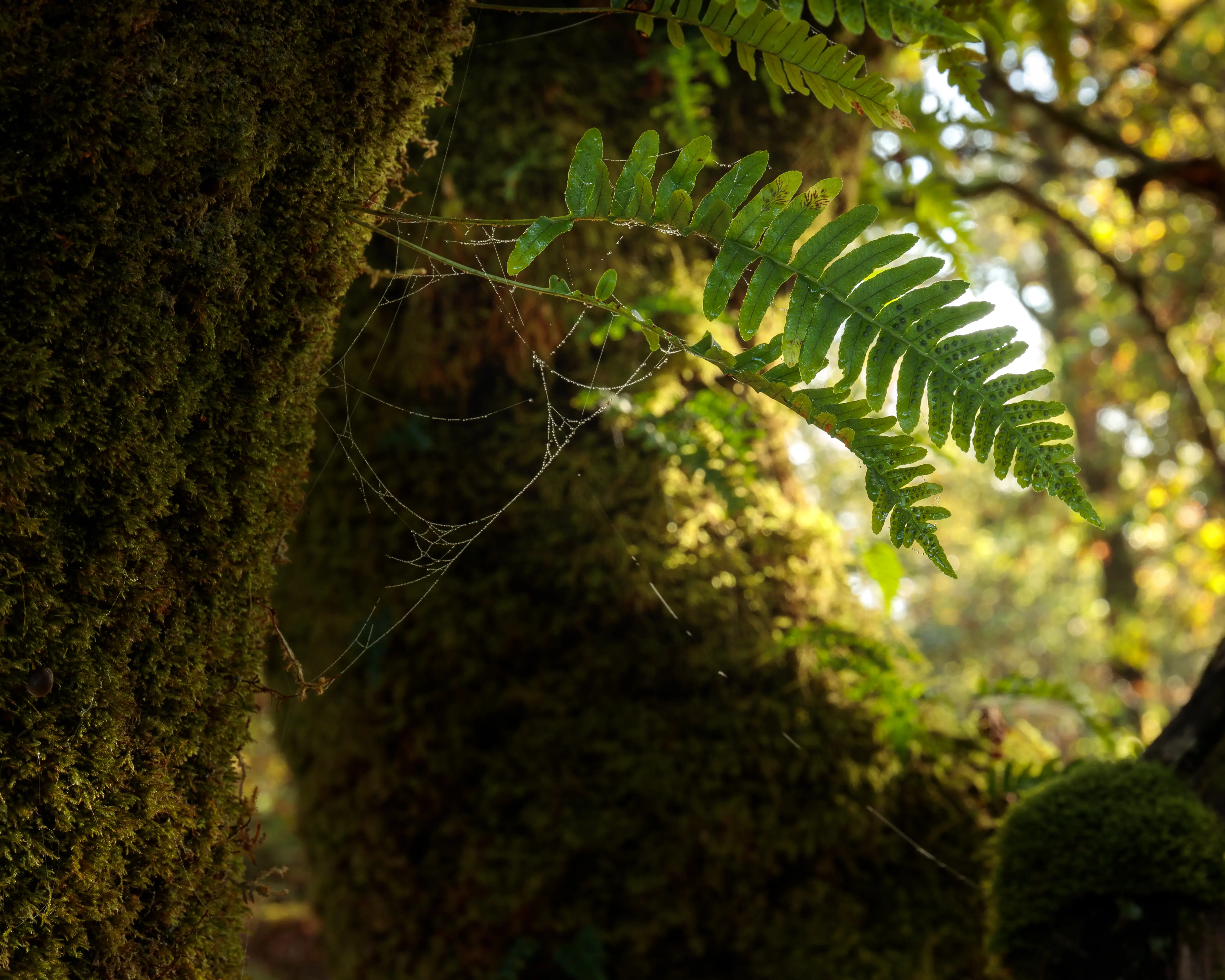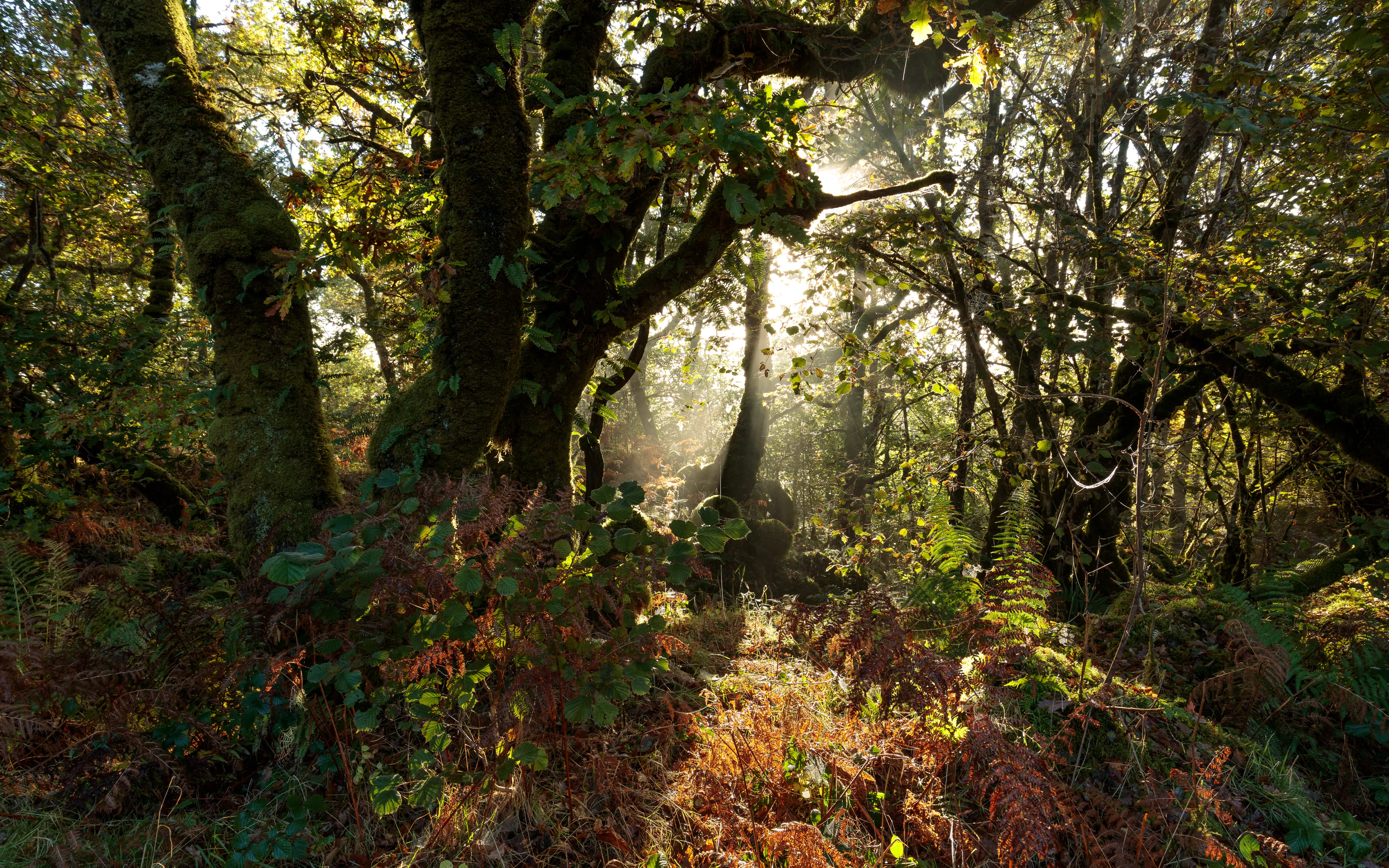Good news for Scotland's rainforest
 We've beaten our in-house rainforest restoration target for 2023-24 by 141% thanks to an extraordinary effort by our teams.
We've beaten our in-house rainforest restoration target for 2023-24 by 141% thanks to an extraordinary effort by our teams.
This is only possible thanks to the dedication of our colleagues across the country who have worked incredibly hard to make it happen.
Scotland's rainforest is rich in biodiversity, including a unique selection of oceanic bryophytes (bryophyte is the collective term often used for mosses, liverworts and hornworts) and lichens. Restoring this precious habitat on Scotland’s national forests and land is one important way that we're working to fight the global decline in biodiversity.
But it's a big job. That's why we're so pleased that our teams have managed to exceed their targets.
Work to help save Scotland’s rare temperate rainforests includes:
- removing Rhododendron ponticum to give other plants space to grow
- managing deer populations to stop them eating plants and young trees
- restoring plantations on ancient woodland sites by returning native species
As well as treating Rhododendron ponticum across 930 hectares, rather than the target 658 hectares, staff also beat their deer management target by 13%.
Our Environment Manager Colin Edwards said:
In what is a never-ending task it’s good to get a glimpse every now and then of light at the end of the tunnel.

The Rainforest zone includes about 18,000 hectares of ancient woodland sites that we manage. Of this area, around 13,000 hectares are PAWS. These were once ancient native woodlands, planted over with commercial tree species in the 20th century.
We've been doubling-up and restoring these sites in line with our rainforest work. They also contain rich biodiversity and need carefully looked after to keep and develop the remnants that survive within them.
Colin commented:
As we remove the conifers and protect the site, native trees and plants can return and the habitat can be restored back to natural biodiverse habitat. In the rainforest zone this effort means we are getting two bites at the cherry and ‘doubling-up’ to also restore these sites back to rainforest.
Commercial plantations have been felled from around 17,000 hectares of PAWS on land we manage. Restoration is a long-term business and the maintenance of these felled sites is important. Last year, within the rainforest zone, we safeguarded 250 hectares and helped this area to progress towards thriving rainforest habitat.
 We manage a third of the 30,325 hectare area of Scotland’s ‘core’ rainforest. Over the last decade, we've dealt with Rhododendron ponticum across approximately 11,000 hectares in the rainforest zone.
We manage a third of the 30,325 hectare area of Scotland’s ‘core’ rainforest. Over the last decade, we've dealt with Rhododendron ponticum across approximately 11,000 hectares in the rainforest zone.
We're a key partner in the Alliance for Scotland’s Rainforests and work with other land managers to carry out the landscape-scale rainforest projects that are needed to make restoration a lasting success.
Our key restoration sites include:
As well as helping to achieve net zero by absorbing CO2, rainforest restoration also provides opportunities for green skills and rural development.